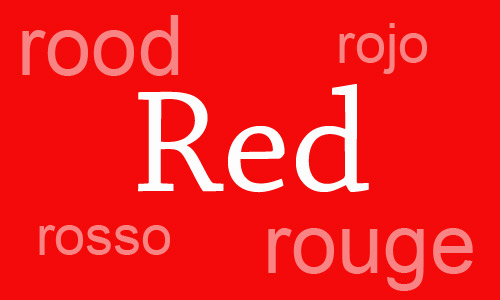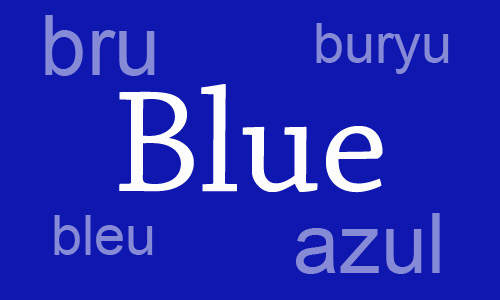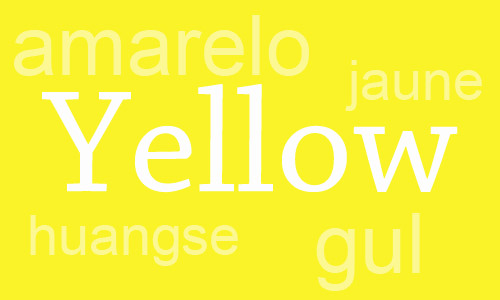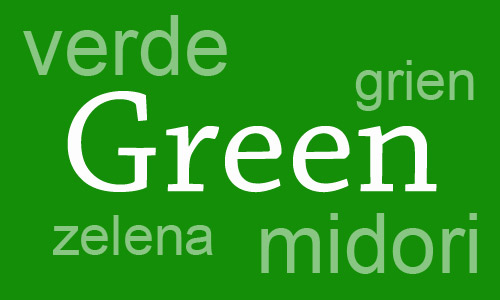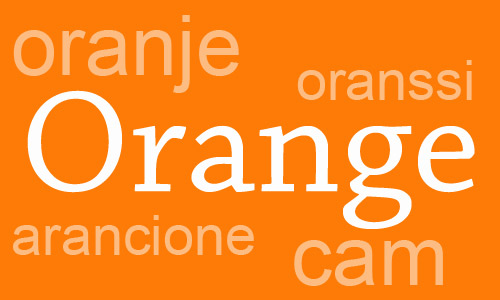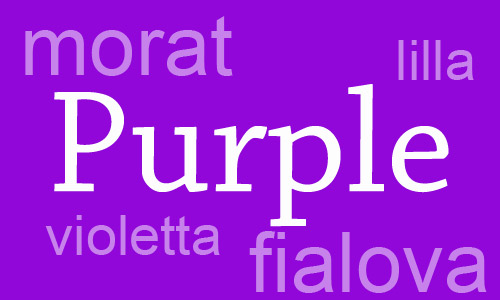No matter where your business is based, it can have an international audience thanks to your website.
And you want your message to come across plainly and without unintentional consequences, making color an important consideration.
Color plays a huge role in the overall aesthetic of a project, including logos, images, backgrounds and even the identity surrounding a company or item. Color can also send out signals that vary from culture to culture.
So before you start your next project, think about your audience and where they are located? Will your color choices come across as intended? Do you need to create dual color schemes for different markets?
While you will never be able to please everyone, it is important to understand how color associations can be perceived.
Here is a guide to primary and secondary colors and some of their strongest cultural associations.
Red
Red, a popular color for design, can have some of the most-far reaching associations, positive and negative. Almost universally, red is connected positively to love and negatively to anger and danger.
In North American and European cultures, red conveys passion, love, danger and power. It is the color of stop signs in the United States and is even thought to stimulate the appetite.
In the East, red is a celebrated color, often representing joy or happiness. Chinese brides wear red for luck; and it represents purity in India.
In Latin America, red is also a color that strongly connects to passion and fire.
In the Middle East, red is the color of caution. Some also see the hue as a sign of evil.
Blue
Blue is one of the most universally-accepted colors in the spectrum. It is accepted by most cultures to have a soothing or calming effect, although it can be negatively associated with “blue feelings†or depression. One of the most popular world uses of blue is for web-based phone service Skype, which is used by customers all over the world.
In North America and Europe, blue is the color of trust and authority, making it the top color used by banks, financial institutions and insurance companies. The color is considered strong and masculine.
In the East, blue is associated with ever-lasting life, strength and immortality. Contrary to the masculine association of blue in the U.S., in Chinese cultures blue is a color of femininity.
In Middle Eastern countries, blue is connected closely to religion and is often linked to heaven or the soul.
Yellow
Because of its connection to the precious metal gold, yellow is almost universally associated with money and wealth. It is also relates to life and warmth as the color of the sun. Similarities in color associations end there for the most part.
While generally a happy color in Western cultures it can also be a sign of caution. School buses and street signs are yellow in the United States, for example.
In Germany, yellow is the color of envy and if often avoided in advertising materials.
In the East, yellow is a color associated with royalty. It is also connected to courage and items of a sacred nature.
In some Middle Eastern countries, people connect yellow to mourning and loss. Other Middle Eastern associations though include happiness and prosperity, much like the color meanings in the west.
Green
As the color of nature, green is often used to represent the natural world. The most earthen tones are the most neutral, with brighter greens carrying more distinct meanings.
Much of the western world associates green with envy or jealousy. Conversely is also represents luck and is commonly used with red for Christmas holiday applications. Green is a trendy color and phrase when it comes to environmental causes or concerns and it can also be associated with forward-thinking.
In Asian cultures, green represents life and nature as well. But the meaning extends to encompass youth and fertility. Be especially wary of negative associations – infidelity, for example. To wear a green hat in China, means to have cheated on a spouse.
Green is the national color of Mexico and is a source of pride in that nation.
The hue is also strongly associated with Islam and feelings of strength and wealth.
Orange
Orange can be a difficult color to use because it has so many varied meanings. People often feel strongly about the color, very much liking or disliking it.
The associations are rather loose in Western cultures. Orange is the color of fall and of harvests because of the changing of the color of leaves on plants. Similarly it is associated with the fall holiday, Halloween. But at the same time, brighter oranges can be sunnier and more upbeat colors. The hue is associated with the sunny state of Florida and its world-known orange crops. It can be a color of balance as well.
Orange in Japan is the color of courage and love.
Orange and reddish-orange tones are popular in Latin American cultures. The hues are earthy and are associated closely with the color of the land in much of South America.
In the Middle East, orange is often associated with loss.
Purple
Purple is both regal and modern. Dark purples are often considered strong and have some ties to ancient royalty while lighter tones are more natural and soft.
On an almost worldwide scale, the color is connected to wealth.
The color is connected to wealth and regality in the West. In the United States, purple — especially when mixed with white for more pale tones — is commonly associated feminine attributes.

